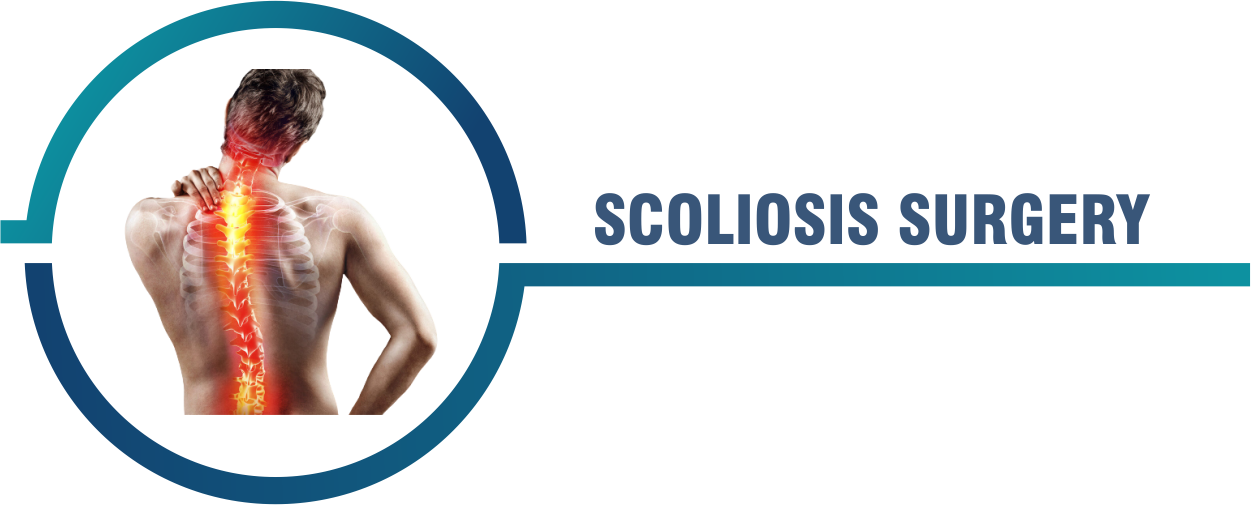
About Scoliosis Surgery
The medical term for a sideways curvature of the spine is scoliosis. Scoliosis spinal fusion surgery (SFS) fuses two or more vertebrae together to help straighten the spine and keep the curvature from worsening.
Most scoliosis patients do not require surgery, and many do not require any treatment at all. Surgery is typically reserved for people with severe scoliosis or those who develop the condition as children. Without treatment, these cases may progress and cause health complications such as chronic pain, decreased mobility, and heart and lung damage.
Symptoms
- Uneven shoulders.
- One shoulder blade stands out more than the other.
- Uneven waistline.
- One hip higher than the other.
- One side of the rib cage protrudes.
- A prominence on one side of the back when bending forward.
- In most cases of scoliosis, the spine rotates or twists in addition to curving side to side. As a result, the ribs or muscles on one side of the body protrude further than those on the other.
Risk Factor
- Age - Signs and symptoms typically begin in adolescence.
- Sex - Although both boys and girls develop mild scoliosis at roughly the same rate, girls are much more likely to have the curve worsen and require treatment.
- A family history - Scoliosis can run in families, but most children with the disease have no family history.
Investigations
Your doctor may also perform a neurological exam to check for:
- Muscle weakness
- Numbness
- Abnormal reflexes
Imaging tests
Plain X-rays can confirm the diagnosis of scoliosis and reveal the severity of the spinal curvature. Repeated radiation exposure can become a concern because multiple X-rays will be taken over the years to see if the curve is worsening.
To reduce this risk, your doctor might suggest a type of imaging system that uses lower doses of radiation to create a 3D model of the spine. However, this system isn't available at all medical centers. Ultrasound is another option, although it can be less precise in determining the severity of the scoliosis curve.
Magnetic resonance imaging (MRI) might be recommended if your doctor suspects that an underlying condition — such as a spinal cord abnormality — is causing the scoliosis.
| Procedure | India | Turkey | Dubai |
| (Price in USD) | (Price in USD) | (Price in USD) | |
| Early Onset Scoliosis Surgery | 16800 | 6000 | 25000 |
| Scoliosis Spine Surgery | 15000 | 18600 | 25000 |
| Spinal deformity and scoliosis | 12000 | - | 25000 |
Note : This is an approximate cost and may vary depending on various condition of the patient health after physical evaluation.
Treatment Options
Side Effects
While most people with scoliosis have a mild form of the disorder, it can occasionally cause complications such as:
- Breathing Difficulties - In severe scoliosis, the rib cage may press against the lungs, making breathing difficult.
- Back problems - People who had scoliosis as children are more likely to develop chronic back pain as adults, particularly if their abnormal curves are large and untreated.
- Appearance - As scoliosis progresses, more visible changes can occur, such as uneven hips and shoulders, prominent ribs, and a shift of the waist and trunk to the side. Individuals suffering from scoliosis are frequently self-conscious about their appearance.
Benefits
Success Rate
When spinal fusion is performed on someone under the age of 16 with idiopathic scoliosis, the average curve correction achieved is approximately 70%.
